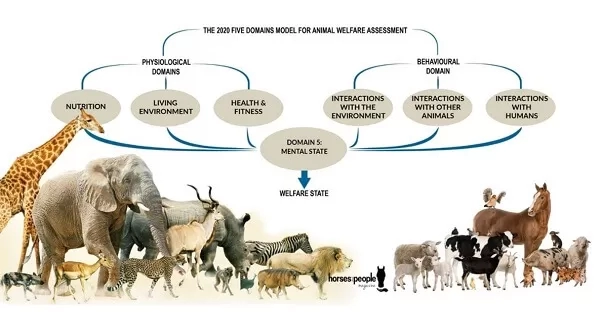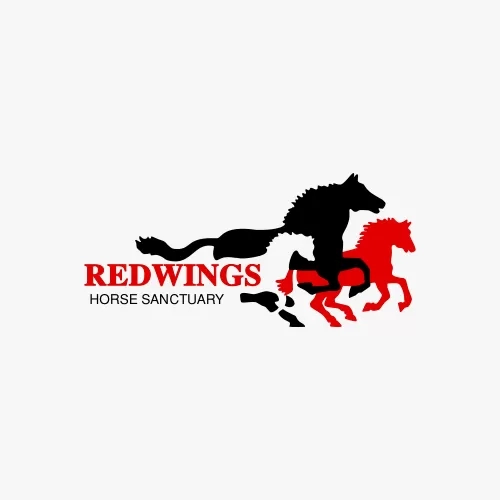07 March 2022

In our Welfare Corner, Beth Cooper explains what The Five Domains of Animal Welfare are and why they're important...
As avid campaigners for better animal welfare, many of you reading this may already be aware of a prominent idea: The Five Freedoms and Five Welfare Needs.
The Five Freedoms have existed since 1965, and along with the Five Welfare Needs, these have helped organisations assess animal welfare since at least 2006. They have been invaluable tools in both ensuring that an animal’s essential needs are met as defined in legislation, as well as helping us to understand what welfare standards we should be aspiring to.
However, as we’ve expanded our knowledge of animal welfare through research , it has become vital that we re-examine the way we look at and think about animal welfare, and how we can provide the best possible lives for animals.
The Five Domains is a the most recent evolution of the concept of animal welfare. It builds upon the Five Freedoms and Needs to allow us to examine animal welfare in a more holistic way, recognising that a whole host of factors in their lives can add up to animals being in a positive or negative mental state.
The Five Domains provides an important framework for creating a positive welfare state for our horses – this means not just meeting their basic welfare needs, but making decisions which go further to optimise their physical and mental wellbeing.
The Five Domains are as follows: (PDF 2.3 MB)
2. Physical environment (PDF 1.9 MB)
4. Behavioural Interactions (PDF 2.2 MB)
a. Interactions with environment
b. Interactions with other animals
c. Interactions with humans

The Five Domains explain that nutrition, physical environment, health, and behavioural interactions each have significant impacts on a horse’s mental welfare. They recognise that animals can have a full range of experiences and feelings, including positive ones, and it is important to consider these when caring for our animals. It is no longer enough to simply avoid negative states, but important that we enact our ability to offer animals a good quality of life.
So, how does this work in practice…let’s take horses in a field as an example. They may have an adequate physical environment and nutrition with enough space and enough grass. This means that the horses are fed, able to display natural behaviour and can exercise. However, if you then introduce horse-safe hedgerows for your horse to browse, you are providing them with a more positive welfare experience. There is enrichment for them, as well as allowing them to exhibit behaviours they might in the wild – their diet becomes more nutritious and fulfilling, with lots of opportunity to choose what they’d like to eat and when they’d like to eat it.
Suddenly we go from horses simply living in a field, to horses which are encouraged to interact with their environment, and are being provided a varied diet, enrichment, and stimulation. Think of how your own mental well-being might have improved once pandemic restrictions eased, and you were able to go out and interact with your environment in a more natural way again.
Boo, one of our famous residents who we recently sadly lost, was completely blind. Losing a major sense like sight can have a huge impact on an animal’s wellbeing, and the mental impact should not be underestimated. Below, you can see an image of Boo grazing on one of the hedgerows bordering his field; he often liked to browse in the hedgerow or chew on the nettles bordering his field. His loss of sight may have contributed to some negative experiences, but he was still able to eat a range of foods, and decide how and when he would like to, which was a positive experience he felt every day.

We also ensured that Boo lived with a companion; although he couldn’t see Flynn, having him nearby to hear or smell and to groom and play with still provided him with good natural behavioural interactions.
Positive welfare experiences can also be helpful to balance out any necessary negative welfare experiences our animals might need to go through, helping bring the horse back to a balanced welfare state. Here is an example:
A horse might need to be kept in a stable for a period of time while recovering from an illness, which limits their ability to move around and exercise in a positive physical environment. By ensuring the stable is kept clean, comfortable, quiet, and well ventilated, you can help to alleviate the negative effects on the horse's physical wellbeing. By adding enrichment, such as a treat ball or hanging lick, you could then also add more positive welfare experiences which benefit their mental wellbeing.

By introducing a stable mirror or another horse, you would also be providing further positive welfare experiences in terms of behavioural interaction. Horses are very social animals, so allowing them to engage in natural social behaviour can have huge benefits to their physical and mental wellbeing.
Using the Five Domains not only allows welfare organisations to assess the welfare of an animal more thoroughly, but it also provides an excellent tool for animal owners to think differently about the care they’re giving their animal. By providing positive welfare experiences we can help make difficult situations easier for our animals, as well as vastly improve the quality of their day-to-day life.
The Five Domains helps put into words what most of us always felt and believed: that animals like horses have the capacity to feel emotions that include things like feeling stressed, or feeling playful. There is increasing evidence that they seek comfort and reassurance from family and friends, and that providing opportunities for horses to feel happy and comfortable is just as important as ensuring that their basic physical needs are met.
It is important that we move beyond providing the means for our animals to simply live, but to create environments and opportunities for our animals that will make their lives worth living. So next time you’re with your horse, riding or in their environment, take a moment to notice whether their welfare needs are met and how you might be able to provide more positive welfare experiences.
Other reading:
Enrichment blog – Helping horses feel at home | Redwings Horse Sanctuary and Equine Veterinary Centre
Companionship blog – Companions providing invaluable friendship! | Redwings Horse Sanctuary and Equine Veterinary Centre
Horse and human bond article - The horse-human bond: Are we getting it right? - Everything Horse (everythinghorseuk.co.uk)

Redwings Press Office
Find out more about Redwings Press Office


